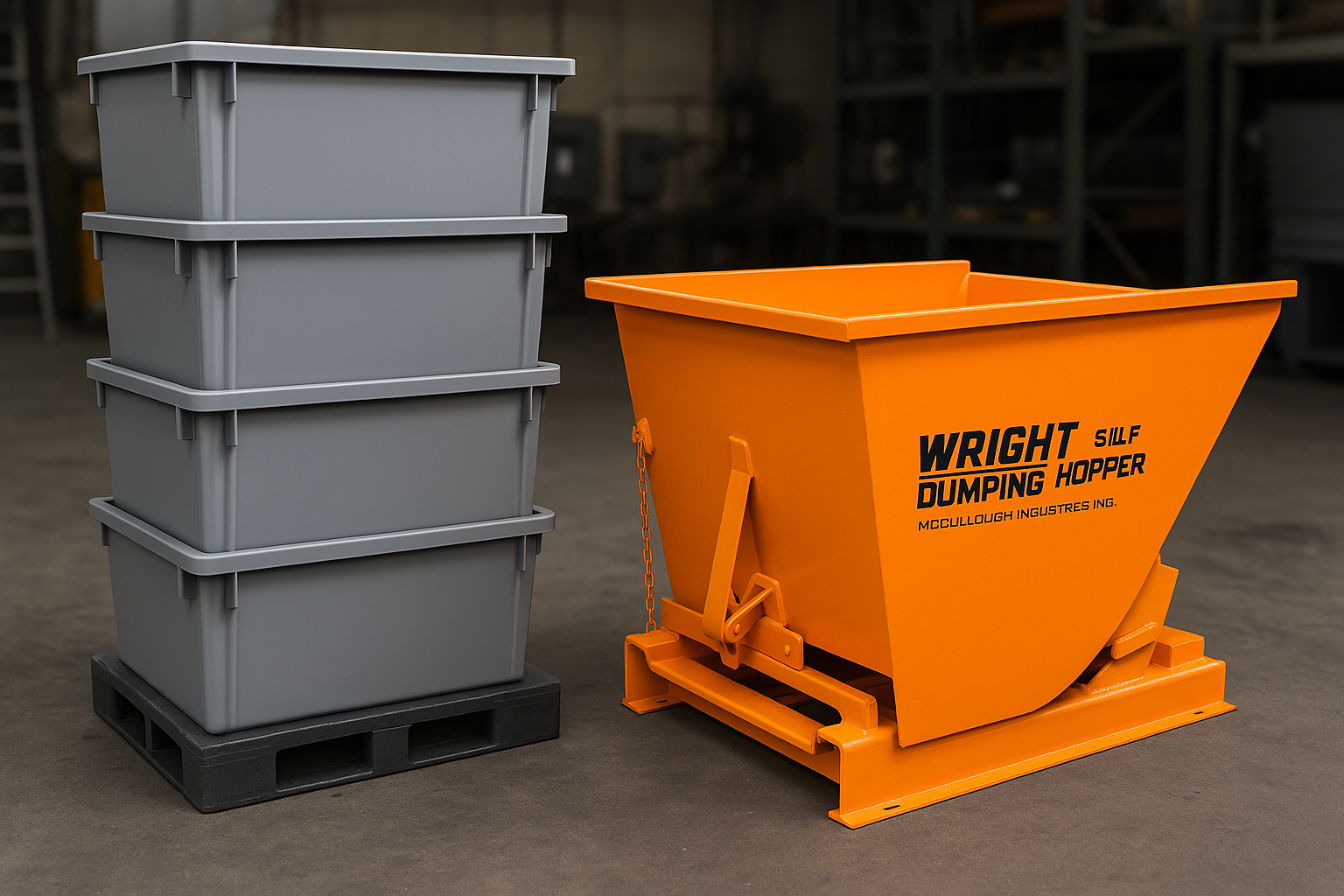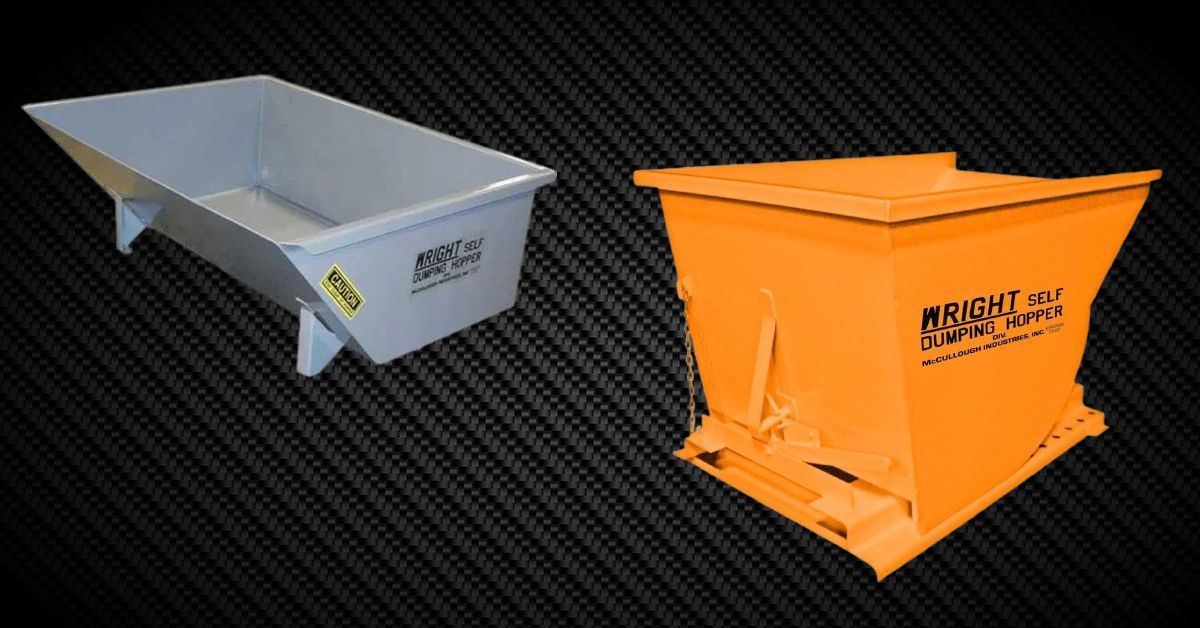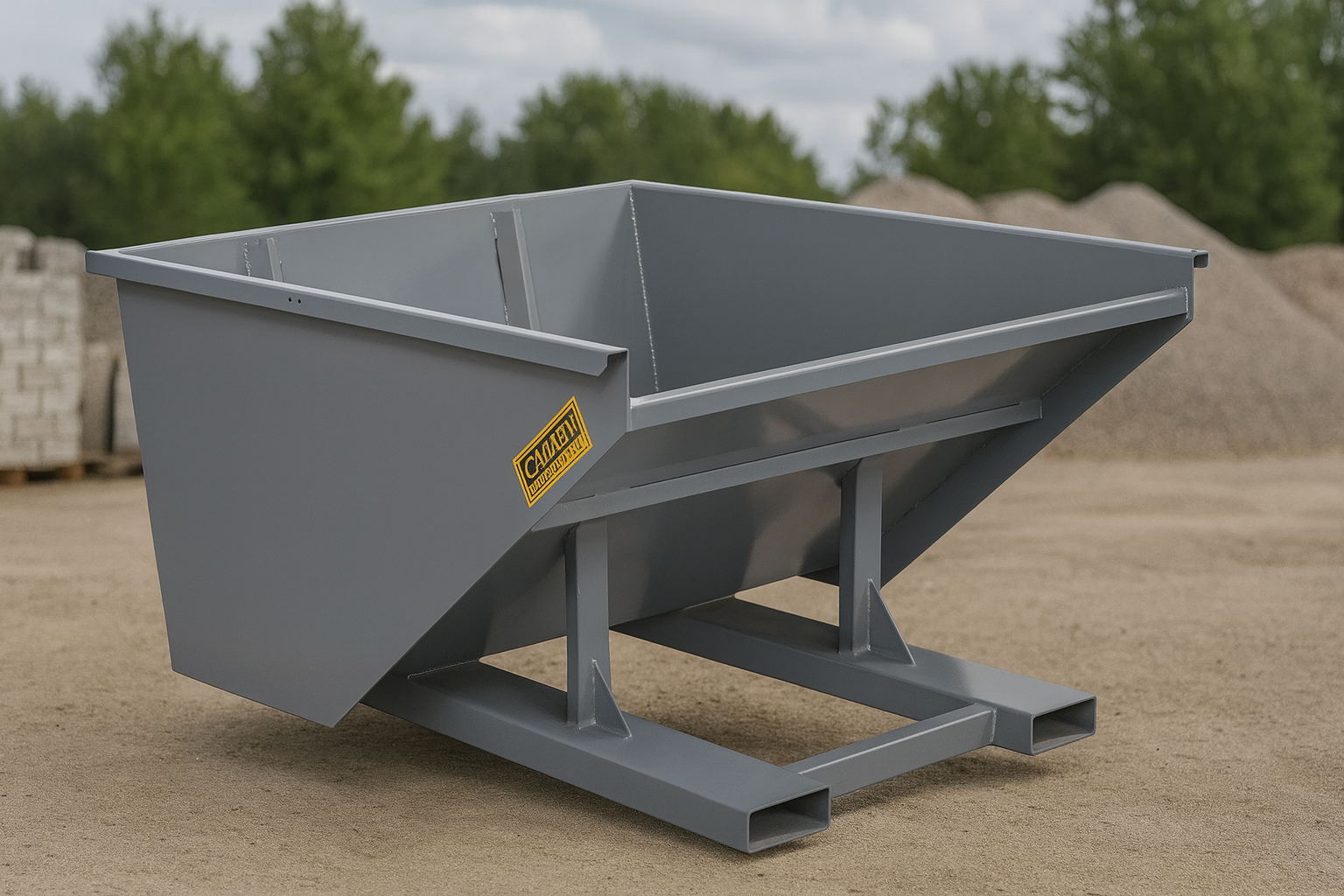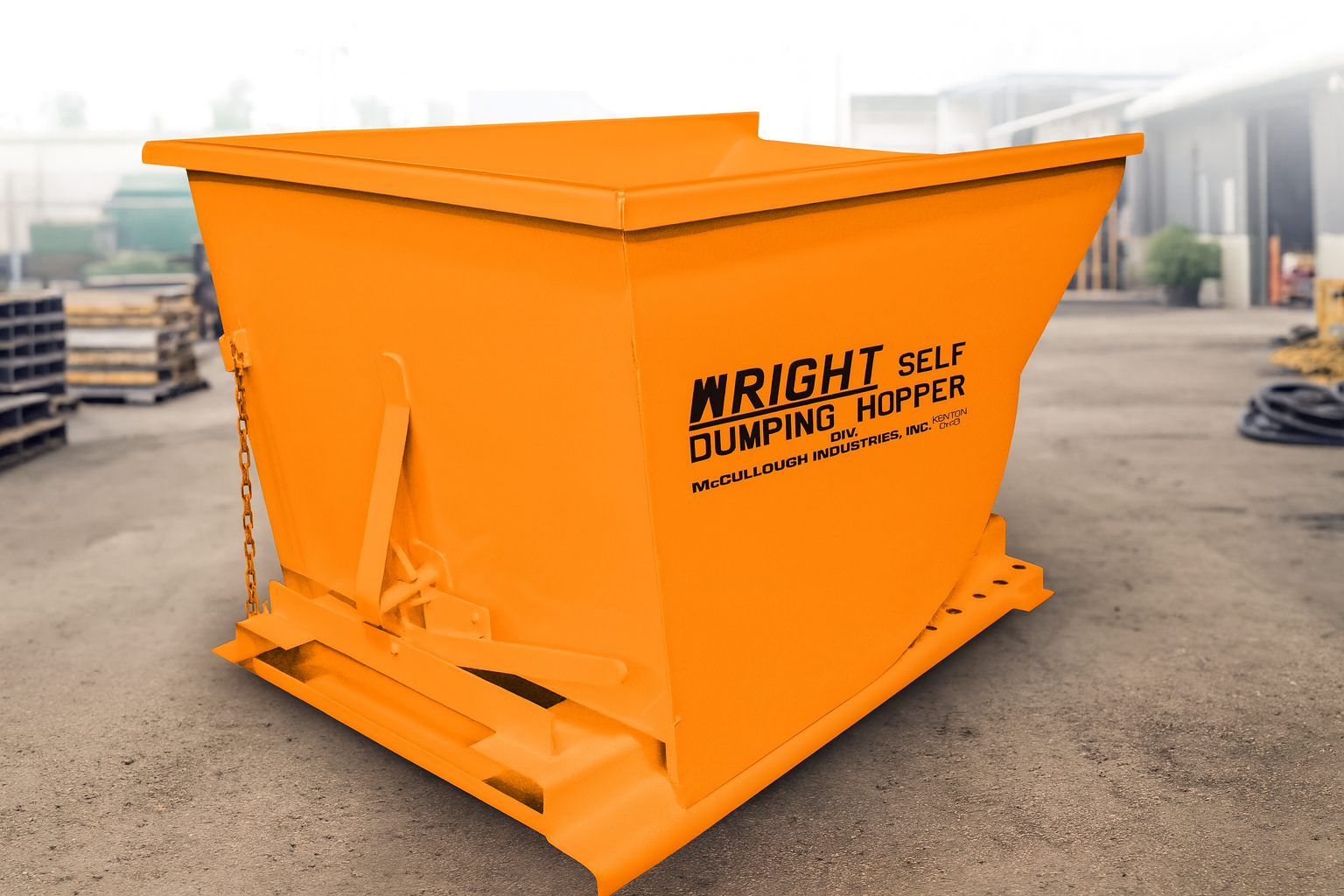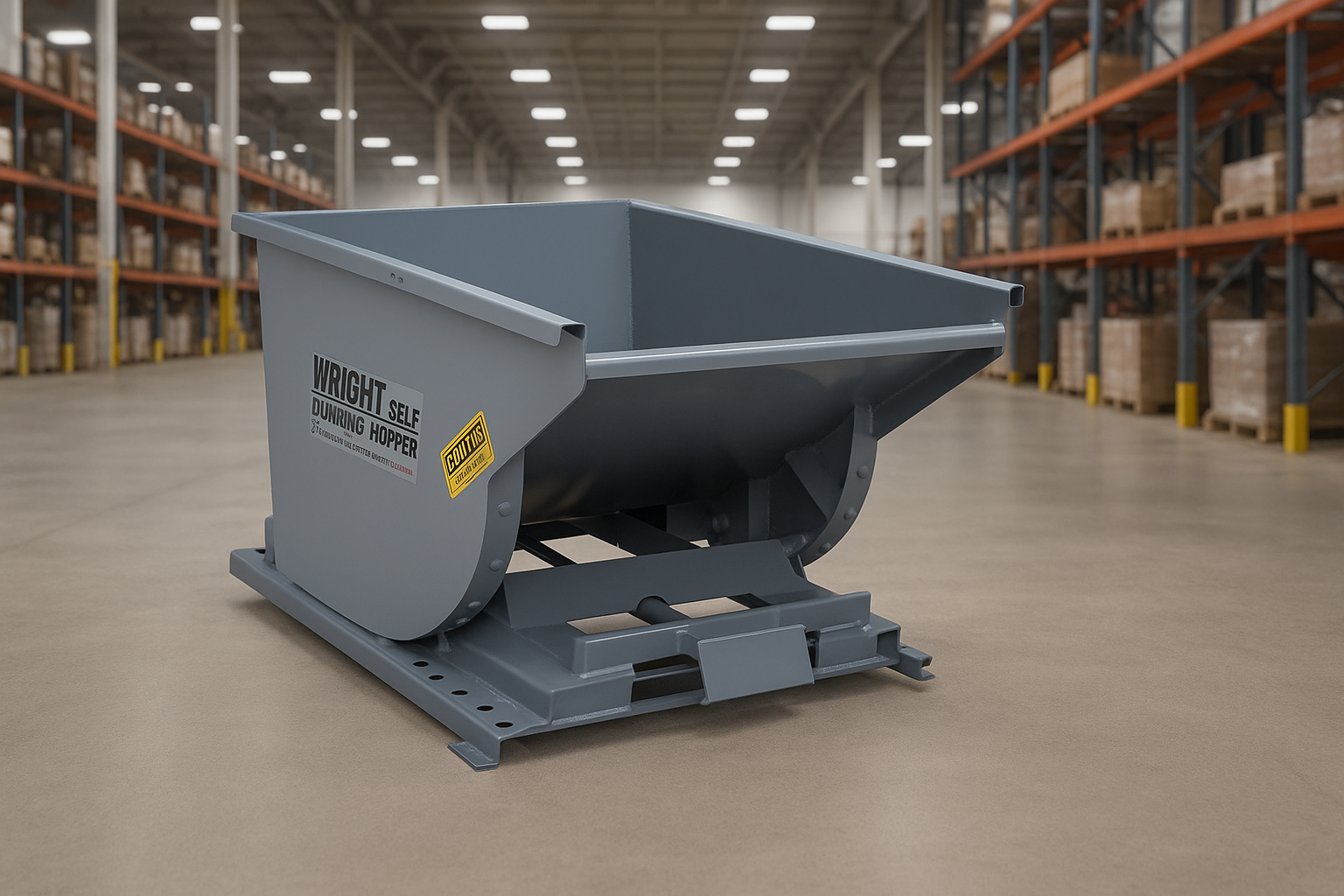
Why Hopper Maintenance Should Be Routine, Not Reactive
In demanding industrial environments, material handling equipment must operate consistently and safely. At McCullough Industries, we design our Wright® Self-Dumping Hoppers to withstand daily abuse but like any workhorse, they need proper care to keep performing. A proactive maintenance checklist minimizes downtime, avoids costly damage, and helps prevent workplace injuries.
This monthly maintenance guide outlines critical inspection points and care tasks to keep your self-dumping hopper fully operational, safe, and compliant. Whether you're using a GEN II Hopper, Low Profile model, or a Quick Attach version, regular checks ensure long-term productivity and safety.
The Importance of Monthly Hopper Maintenance
Routine inspections can:
- Prevent mechanical failure during dumping
- Detect wear before it causes structural issues
- Extend the lifespan of fork tubes, hinges, and weld seams
- Ensure OSHA compliance and minimize liability
When hoppers are used daily in scrap-heavy, high-volume operations, small problems can quickly become serious hazards if left unaddressed.
Essential Monthly Inspection Checklist
Below is a structured table outlining the recommended monthly checks and actions to perform on your Wright® hopper. These tasks are applicable to all self-dumping hoppers in industrial use.
| Component | What to Inspect | Recommended Action |
|---|---|---|
| Fork Pockets | Check for deformation, cracks | Re-weld or replace if compromised |
| Dumping Hinge Assembly | Inspect for looseness or binding | Lubricate and tighten bolts |
| Latch Mechanism | Ensure smooth locking and release | Clean, test spring tension |
| Hopper Body / Welds | Look for cracks, rust, or fatigue | Touch-up welds or reinforce as needed |
| Safety Chains / Stops | Confirm connection and integrity | Replace worn or damaged chains |
| Wheels / Casters (if used) | Check for flat spots or looseness | Tighten mounts or replace as needed |
| Paint / Finish | Inspect for rust, chips, or wear | Recoat to prevent corrosion |
| Drain Plug / Gasket | Ensure no leaks or deterioration | Replace gasket or plug as necessary |
| Dumping Action | Test for smooth forward and return | Adjust or lubricate hinge system |
Hopper-Specific Considerations
- Quick Attach Hoppers: Inspect hydraulic fittings and lines for leaks, abrasion, and secure mounting. Grease pivot pins monthly and test hydraulic dump control.
- Bump Release Models: Check auto-release bumper pad and reset springs for responsiveness and wear.
- Chip Hoppers: Ensure any drain plugs or oil trays are not clogged and are emptied and cleaned regularly.
Safety Protocols During Maintenance
Always follow these safety steps before performing hopper inspections:
- Lower the hopper to the ground
- Disconnect or isolate any hydraulic or mechanical inputs
- Use appropriate PPE (gloves, eyewear)
- Tag out equipment if needed for detailed repair
Never inspect a hopper while it is suspended or loaded. Accidental dumping or shifting loads can cause serious injury.
Signs It’s Time for a Repair or Replacement
While monthly maintenance prolongs the life of your hopper, certain conditions signal that it’s time to act:
- Hairline cracks appearing along weld seams or fork tubes
- Increased resistance or jerky motion during dumping
- Bent latch components or a latch that won’t stay locked
- Consistent leaks from sealed areas despite gasket replacement
- Significant rust or finish breakdown on structural areas
If these signs are present, reach out to the McCullough Industries team for parts, repairs, or replacement units tailored to your operation.
Documentation and Logging
Keep a simple monthly log for each hopper in use. Include:
- Date of inspection
- Issues noted and corrective actions taken
- Inspector initials or name
- Next due date
This log not only helps maintain accountability, but also supports OSHA compliance and makes audits smoother.
Preventative Maintenance
A hopper breakdown doesn’t just cost in repairs, it can delay production, damage equipment, or cause injuries. Monthly maintenance is your frontline defense against hidden wear and tear that builds over time. When your team makes it a habit, you reduce reactive costs and keep workflows moving.
McCullough Industries: Supporting Long-Term Performance
Our Wright® Self-Dumping Hoppers are engineered to last and that includes support after the sale. We offer:
- Replacement parts and hardware kits
- Refurbishing and re-coating services
- Custom rebuilds and upgrades
- Expert support for on-site troubleshooting
If you need help evaluating your hopper’s condition or retrofitting new safety features, our team is ready.
FAQs: Hopper Maintenance Checklist
How often should I inspect my hopper?
We recommend a detailed inspection every 30 days for hoppers in daily use. Some facilities may need more frequent checks depending on application.
What if my latch mechanism isn’t releasing properly?
First, clean the latch area and lubricate moving parts. If performance doesn’t improve, check spring tension or contact us for replacement components.
Can McCullough help me replace a damaged fork tube?
Yes. We offer replacement parts and can guide your maintenance team on safe installation or schedule a factory repair.
Do your hoppers have grease fittings or zerks?
Select models, such as Quick Attach Hoppers, have grease points at pivots and cylinders. These should be serviced monthly.
Where can I get parts or manuals?
Contact McCullough Industries directly or visit the Wright® Self-Dumping Hoppers product page on our website to request support.
Let’s Keep Your Hopper Running Like New
Maintenance isn’t a burden, it’s protection for your investment. A few minutes each month ensures that your Wright® Self-Dumping Hopper keeps doing the heavy lifting without interruption. If you need help setting up your hopper maintenance program, McCullough Industries is here to help.

